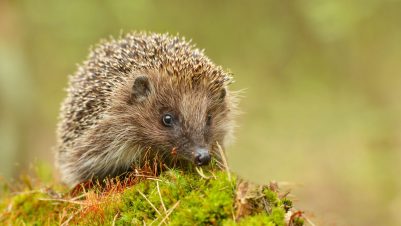I MADE my first ever trip to India in November of this year. It was to the state of Kerala in the south-west of the country and during that time I was lucky enough to visit one of the Wildlife Sanctuaries; areas set aside for the preservation and conservation of the native wildlife.
The sanctuary was located in the Western Ghat mountains, a UNESCO world heritage site. The Western Ghats are listed as one of the 10 “hottest hotspots” for biodiversity in the world and are home to one of the most endangered primates in the world, the lion tailed macaque.
The sanctuary in question was carefully monitored by the Indian Government with forest rangers and an extensive array of camera traps. It is known to contain a population of a little over 70 tigers, a similar number of leopards, and a significant population of wild elephants. Indeed the whole area of the Western Ghats is home to the largest population of wild Asian elephants anywhere in the world.
My colleagues and I were taken on a 90-minute tour through the sanctuary in a couple of Mahindra jeeps, hoping to see elephants or even a tiger. As is often the case when looking for wildlife these didn’t materialise, but we did see fresh tiger footprints and a range of other species, including peafowl and an abundance of chital or spotted deer, one of the tiger’s favourite prey species. We also spotted muntjac, wild boar, langurs, a young sambur buck, and an iridescent blue king fisher.
The sanctuary was densely forested with occasional glades and clearings and it was in these that we encountered most of the spotted deer. Visibility beyond the glades was severely limited by the density of the vegetation and there may well have been hidden delights just a few yards away from us.
We were taken to the main re-watching tower for the sanctuary and from the top we were able to look down onto the dense forest canopy that extended for miles in all directions.
One of the challenges to conserving wildlife in India is managing the human/wildlife conflict. India is the second most populous country on the planet with over 1.2 billion people, a number that is still increasing. The land around the sanctuaries in the Western Ghats is used for growing tea and coffee, teak and bananas; and elephants in particular encroach and cause damage to the livelihoods (and sometimes the lives) of local farmers. Indeed, in some areas there are tall electric fences erected in order to try to limit this encroachment but it is a constant battle.
One of the great problems with wildlife conservation and the designation of sanctuaries is fragmentation of populations which leads to genetic isolation. This is well recognised throughout the world and in countries like the UK it may be relatively easy (given the will) to connect up habitats with hedgerows and small stretches of woodland to allow the exchange of birds and small mammals between areas. Extending this to permit free movement of species such as tigers and elephants is more problematic and likely to create greater conflict with people along the way.
One of the highlights of the visit was coming across a group of three Indian bison or Gaur. These are the largest wild bovines in the world with large bulls said to reach up to 1,500kg though 1,000kg would be more usual. Formerly they ranged all over India and south-east Asia but their numbers have been reduced significantly over the last 30 years and they are now listed as vulnerable.
Watching them from the safety of the jeep was a real privilege and almost made up for the disappointment of not seeing an elephant or tiger. I came away from the visit with the impression that, for the time being at least, conservation of wildlife in the Western Ghats is in safe hands.










